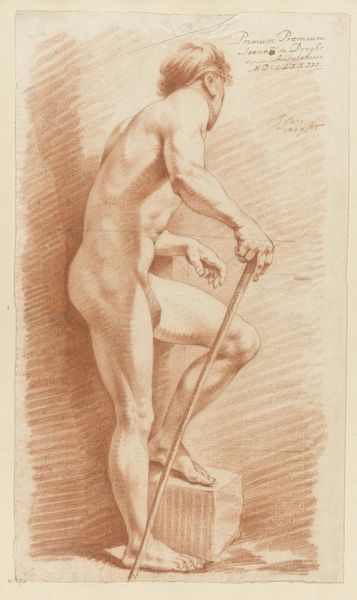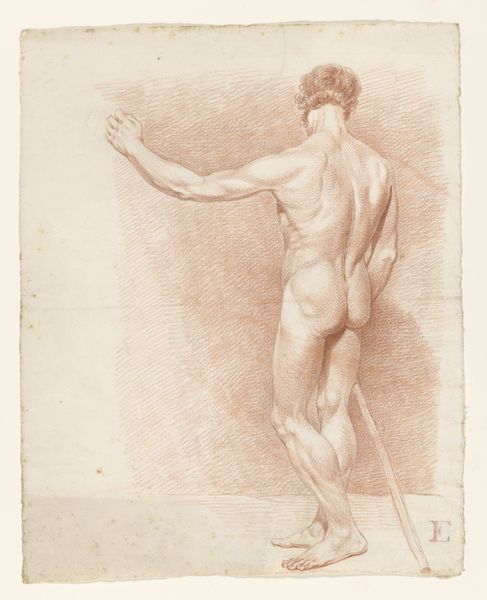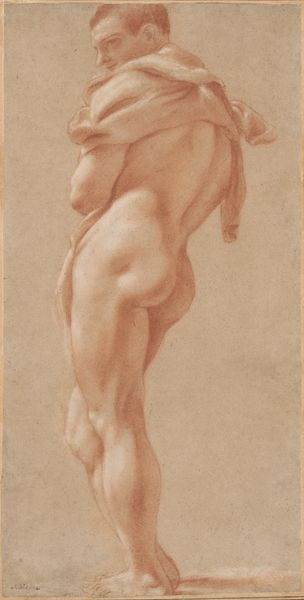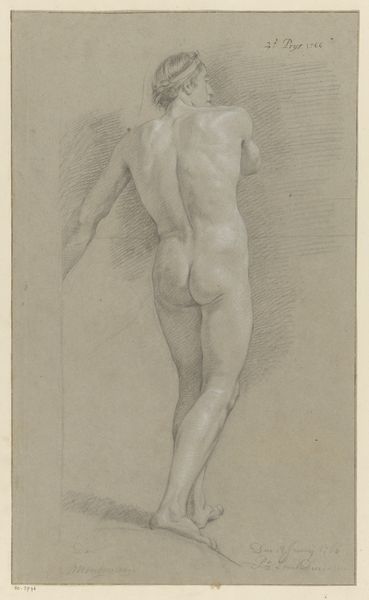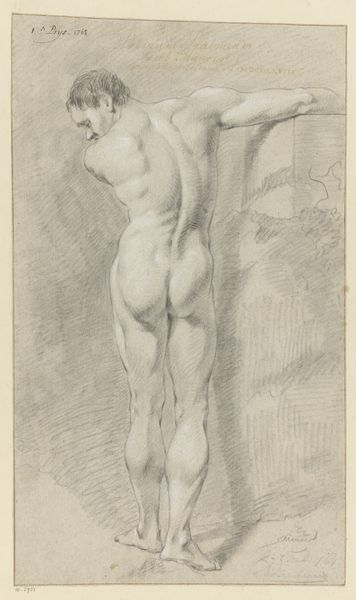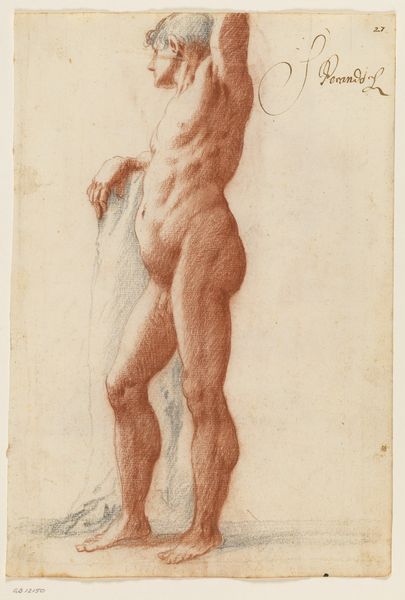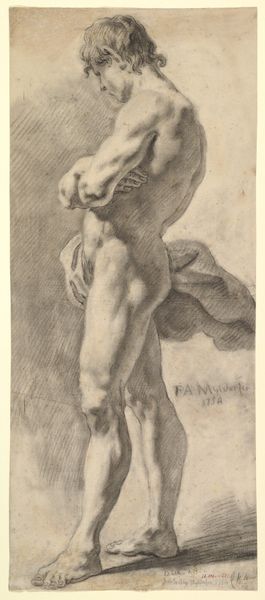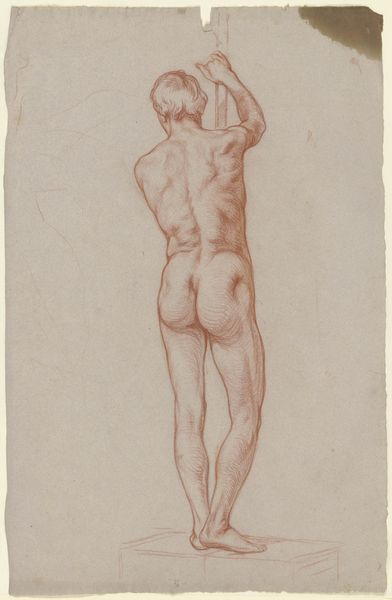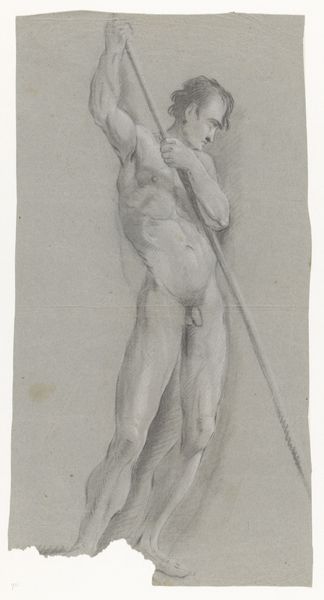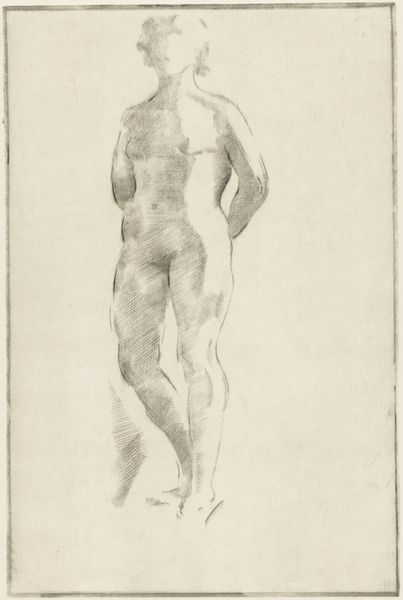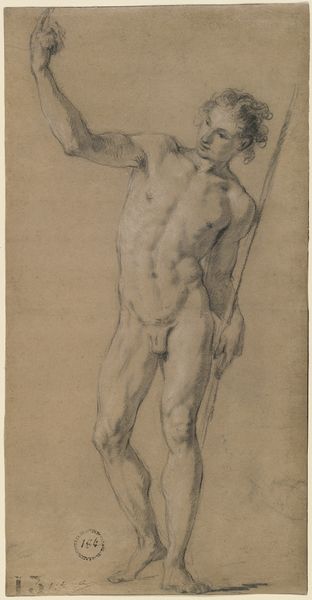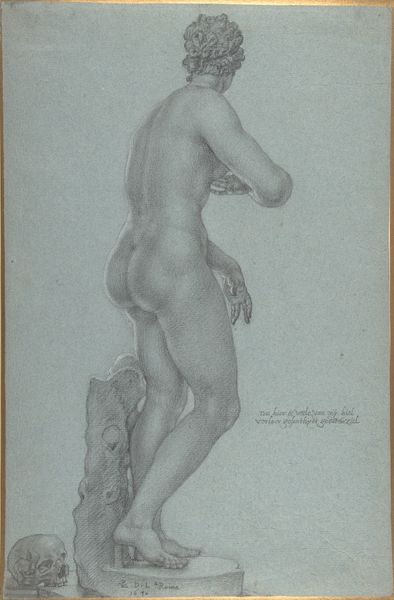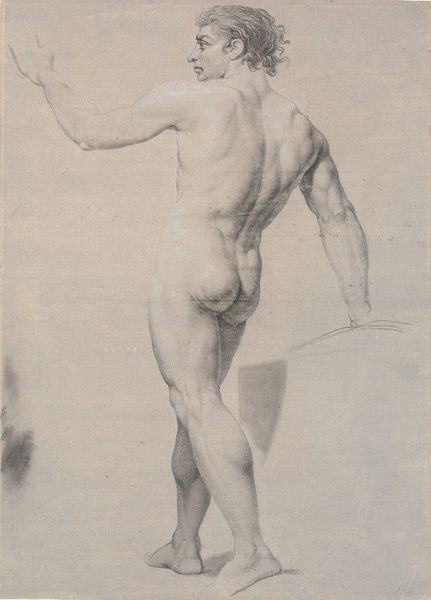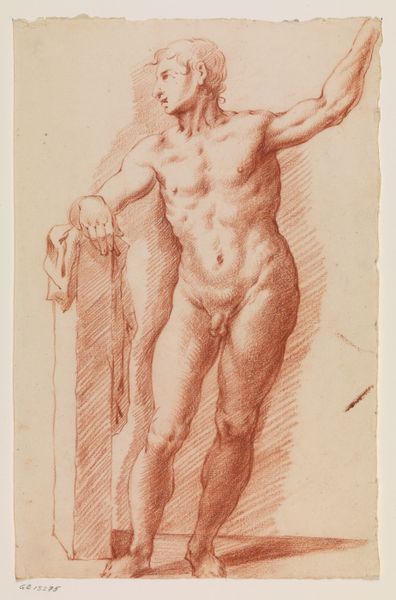
Stående mandlig model, set fra ryggen, med løftet højre hånd 1625 - 1677
0:00
0:00
drawing, pencil
#
drawing
#
figuration
#
pencil drawing
#
pencil
#
portrait drawing
#
academic-art
#
nude
#
realism
Dimensions: 423 mm (height) x 268 mm (width) (bladmaal)
Curator: This pencil drawing, “Standing Male Model, Seen from the Back, with Right Hand Raised,” comes to us from Heinrich Dittmers. Dating from somewhere between 1625 and 1677, it resides now in the collection of the SMK, the Statens Museum for Kunst. Editor: My initial impression is one of intense study. The musculature is so meticulously rendered, and the use of light and shadow really makes him seem… present. Curator: Absolutely. The pose, with the raised arm, is so reminiscent of classical sculpture—the figures of heroes, gods—suggesting perhaps a yearning for the ideal human form. The staff he holds adds to this sense of ancient gravitas. Editor: That arm raised high, for me, suggests a kind of yearning, maybe reaching. The line of the back is gorgeous, the contrapposto subtly echoed in the positioning of his legs… He’s solid, but there's also something vulnerable in turning his back to the viewer. Curator: Note how the nudity ties into themes of vulnerability and honesty, especially in religious art. We also can consider a societal viewpoint with male forms representing cultural values, power, and ideals. I suspect viewers at the time of creation read various classical and philosophical cues based on how this figure was staged. Editor: Agreed, the historical associations with academic drawings must be factored in. Still, I appreciate how Dittmers doesn’t just slavishly reproduce an ideal. Look at the individuality of the muscles, the slight imperfections in the skin… it’s about observed reality too. Curator: So true; the blending of the symbolic and the observed gives the artwork a layered resonance that stretches across centuries. The cultural encoding creates dialogue through time. Editor: Ultimately, I think this piece demonstrates that the language of form can itself be powerfully expressive, conveying deep emotion and historical context. It feels like we've only scratched the surface, really.
Comments
No comments
Be the first to comment and join the conversation on the ultimate creative platform.
